Tensile strength of rocks¶
- Relatively unimportant!
Reasons:
Tensile strength is low compared to compressive strength.
When a large enough volume of rock is considered, flaws are bound to exist making the tensile strength near zero.
In situ stress at depth is never tensile.
Opening mode fracture (Mode I)¶
${}$
$$ K_{Ic} \ge K_I = (P_f - S_3) \pi \sqrt{L} $$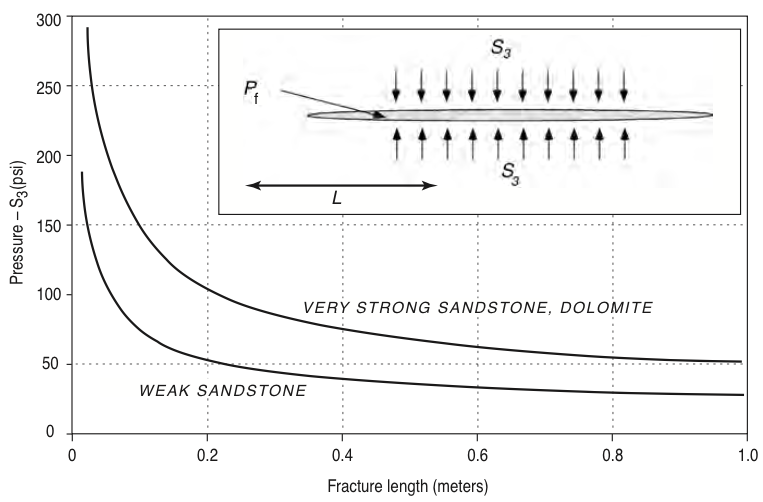
© Cambridge University Press Zoback, Reservoir Geomechanics (Fig. 4.21, pp. 122)
Recall: Slip on faults¶
${}$
$$ \dfrac{\tau}{\sigma_n} = \mu $$Coulomb failure function
$$ f = \tau - \mu \sigma_n \le 0 $$Critically stressed crust¶
${}$
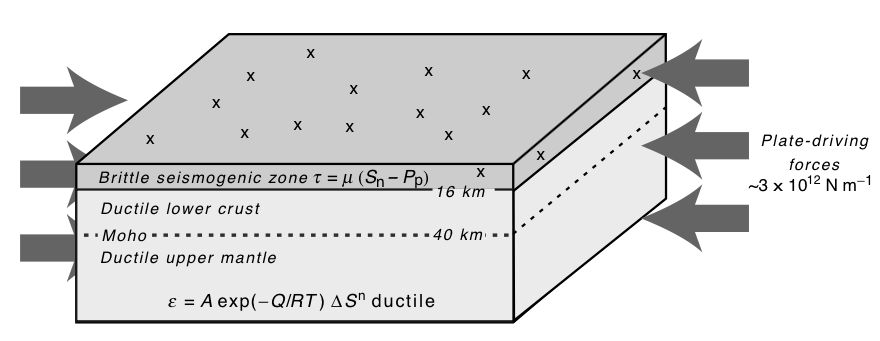
© Cambridge University Press Zoback, Reservoir Geomechanics (Fig. 4.25, pp. 129)
Stress magnitudes controlled by frictional strength¶
${}$
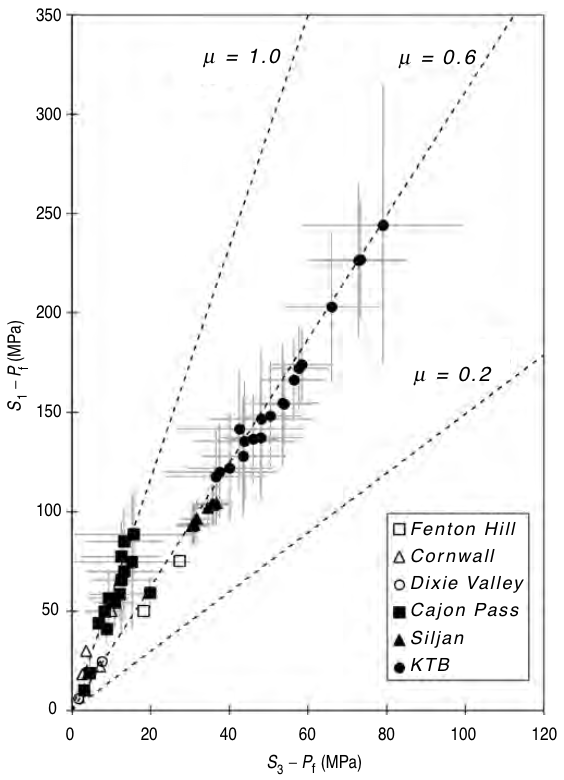
© Cambridge University Press Zoback, Reservoir Geomechanics (Fig. 4.26, pp. 129)
Limits on in situ stress¶
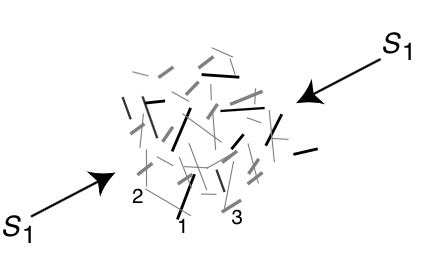 |
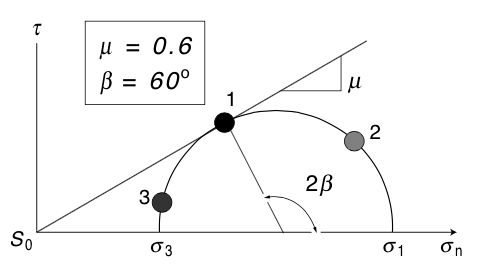 |
Optimal angle for frictional sliding:
$$ \beta = \frac{\pi}{4} + \frac{1}{2} \tan^{-1}\mu $$© Cambridge University Press Zoback, Reservoir Geomechanics (Fig. 4.27b,c, pp. 131)
Principle stress ratio¶
${}$
$$ \frac{\sigma_1}{\sigma_3} = \frac{S_1 - P_p}{S_3 - P_p} = \left(\sqrt{\mu^2 + 1}+\mu^2\right)^2 $$Asuming $\mu = 0.6$
$$ \frac{\sigma_1}{\sigma_3} = 3.1 $$Stress bounds¶
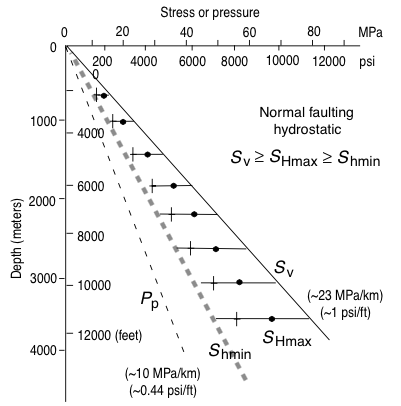 |
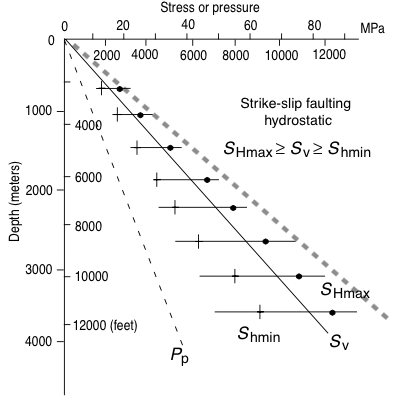 |
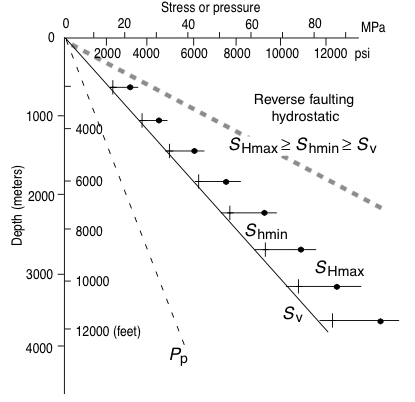 |
| $\dfrac{S_v - P_p}{S_{hmin} - P_p} \le \left(\sqrt{\mu^2 + 1}+\mu^2\right)$ | $\dfrac{S_{Hmax} - P_p}{S_{hmin} - P_p} \le \left(\sqrt{\mu^2 + 1}+\mu^2\right)$ | $\dfrac{S_{Hmax} - P_p}{S_v - P_p} \le \left(\sqrt{\mu^2 + 1}+\mu^2\right)$ |
Pore pressure, stress difference, and fault slip¶
${}$
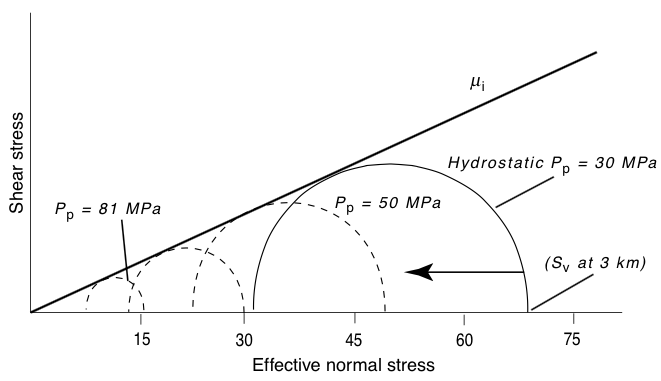
© Cambridge University Press Zoback, Reservoir Geomechanics (Fig. 4.30, pp. 136)
